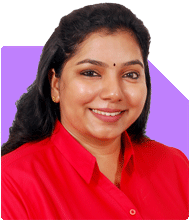Sir im 49... Im having 15 lakhs lumpsum and can invest up to 30k per month for 10 years... I don't have any other commitments.. pls suggest me good plan to have corpse after 10 year's
Ans: You are 49 years old, with Rs. 15 lakhs to invest upfront and a capacity to invest Rs. 30,000 per month for 10 years. Since you have no commitments, this is an excellent opportunity to focus on building a substantial corpus.
Your financial goal should be to ensure long-term growth while minimizing risks. Since you have a decade to invest, this gives room to explore both equity and debt options in a balanced manner.
Below is a detailed 360-degree approach to help you achieve your goal.
Lump Sum Investment Strategy
A one-time investment of Rs. 15 lakhs provides a strong starting base. The aim here should be to balance between equity and debt to ensure stability and growth.
Equity Component (70% of Rs. 15 lakhs): Equities have a higher growth potential in the long run. By allocating Rs. 10.5 lakhs to equity mutual funds, you can aim for wealth creation. Equity funds are better at capitalizing on market upswings, giving you good returns over a 10-year period. Actively managed large-cap, multi-cap, and mid-cap funds should be considered, as these categories offer a good risk-return trade-off.
Debt Component (30% of Rs. 15 lakhs): Rs. 4.5 lakhs should go into debt mutual funds. This will help provide stability to your portfolio. Debt funds are less volatile and ensure the protection of your capital in case of market downturns. For example, you could consider short-term or dynamic bond funds that adjust well to interest rate movements, which can act as a safeguard.
Systematic Monthly Investment (SIP Strategy)
You plan to invest Rs. 30,000 per month for the next 10 years. Systematic Investment Plans (SIPs) are ideal for you as they help you build wealth gradually by spreading out your investments and reducing risks due to market volatility. Here’s a balanced approach to distribute your Rs. 30,000:
Equity SIP (70% of Rs. 30,000): Invest Rs. 21,000 monthly in diversified equity mutual funds across different categories like large-cap, mid-cap, and flexi-cap funds. This allocation will help you ride out market fluctuations and allow compounding benefits over time.
Debt SIP (30% of Rs. 30,000): The remaining Rs. 9,000 can be invested in debt mutual funds to give your portfolio stability and lower volatility. Debt mutual funds, such as corporate bond funds or dynamic bond funds, will cushion the impact of any market corrections and provide steady growth.
Avoid Index Funds
While index funds have gained popularity due to low expense ratios, they may not be the best choice for you. Index funds mirror the market, so when the market falls, your investments fall too. You don’t get the expertise of a fund manager who can make strategic moves during volatile times.
Disadvantages: Index funds do not offer any protection during market downturns, which can severely affect your investment corpus in a period of high volatility.
Instead, actively managed mutual funds, overseen by skilled fund managers, tend to outperform the index in most cases. They are more flexible and can adjust their portfolios during uncertain times.
Stick to Regular Mutual Funds Through a Certified Financial Planner (CFP)
It is better to avoid direct funds as managing them requires deep market knowledge and constant tracking. Direct funds might look cost-efficient, but they lack the professional guidance that regular funds offer when invested through a Certified Financial Planner (CFP).
Disadvantages of Direct Funds: When investing directly, you miss out on professional advice and expertise. This could lead to poor decision-making, especially during volatile periods or when the market is down.
Benefits of Regular Funds: Investing through a CFP gives you access to personalized strategies and rebalancing opportunities that suit your goals and risk tolerance. The extra expense ratio is worth it when considering the guidance you receive.
Tax Efficiency and Long-Term Gains
It is essential to understand the tax implications of your investments to maximize returns.
Equity Mutual Funds: Long-Term Capital Gains (LTCG) from equity mutual funds are taxed at 12.5% on profits exceeding Rs. 1.25 lakh per annum. This is lower than the tax on other investment options, making equity funds tax-efficient.
Debt Mutual Funds: Gains from debt mutual funds are taxed based on your income tax slab. This is important to consider when planning withdrawals, as premature withdrawals could push you into a higher tax bracket.
Thus, planning your withdrawals smartly post the 10-year period will help you minimize tax liability and maximize your returns.
Portfolio Rebalancing
Once you’ve invested in a mix of equity and debt funds, it’s crucial to monitor and rebalance your portfolio every year. Rebalancing ensures that your portfolio remains aligned with your goals and risk tolerance, especially when market conditions change.
Why Rebalancing Matters: Over time, due to market fluctuations, your equity portion may grow larger than your desired allocation. If equity takes up too much space, your risk exposure increases. On the other hand, if debt funds take up more, your growth could stagnate.
By rebalancing, you can ensure that your portfolio maintains the optimal balance between growth and stability.
Focus on SIP Discipline
A key factor in your success will be maintaining discipline with your monthly SIPs. Consistent SIP investments are a proven way to build wealth over time. You will benefit from rupee cost averaging, which reduces the impact of market volatility by buying more units when prices are low and fewer when prices are high.
Rupee Cost Averaging: This is a key advantage of SIPs. It allows you to accumulate more units when the market is down, which can significantly boost your returns when the market recovers.
Power of Compounding: The longer you stay invested, the greater your compounding returns will be. Since you have 10 years, sticking to your SIPs without interruptions will yield significant benefits in the long term.
Benefits of a Well-Diversified Portfolio
By diversifying your portfolio into different mutual fund categories, you are not putting all your eggs in one basket. This strategy reduces risk and provides smoother returns over time.
Equity Funds for Growth: Equities tend to outperform other asset classes in the long run. With 70% of your investments in equity mutual funds, you stand a good chance of generating high returns over 10 years.
Debt Funds for Stability: Debt mutual funds bring much-needed stability to your portfolio, protecting you during market downturns and ensuring that you meet your financial goals without major disruptions.
Inflation and Wealth Preservation
Inflation can erode the value of your money over time. Therefore, it is critical to ensure that your investment grows at a rate that beats inflation. Equity mutual funds have the potential to deliver inflation-beating returns in the long term.
Why Equity Is Key: Historically, equity investments have consistently outpaced inflation. Over the next decade, your goal should be to maintain a significant portion of your portfolio in equity to protect your purchasing power.
Debt for Wealth Preservation: Debt mutual funds, while not typically offering high returns, play an important role in wealth preservation. They will protect your capital from market volatility and ensure that your returns are steady.
Emergency Fund and Liquidity
Although you have no other commitments, it is wise to maintain an emergency fund outside your investment portfolio. An emergency fund ensures you don’t need to touch your investments in case of unforeseen expenses.
3-6 Months of Expenses: Set aside 3-6 months’ worth of expenses in a liquid fund or a savings account. This will give you peace of mind and liquidity in case of any financial emergencies.
Avoid Early Withdrawals: Tapping into your SIPs or lump sum investment before the 10-year period could derail your long-term plans. Having an emergency fund prevents this.
Final Insights
By following this strategy, you can create a substantial corpus over the next 10 years. The key is to remain disciplined with your SIPs and invest wisely in a balanced portfolio of equity and debt funds. Avoid distractions like direct funds and index funds, which may not offer the flexibility or risk management you need.
Ensure you review your portfolio annually and rebalance it to stay aligned with your goals. With proper planning, you will have a solid financial foundation by the end of the 10-year period, and you’ll be well-positioned to achieve your financial aspirations.
Best Regards,
K. Ramalingam, MBA, CFP,
Chief Financial Planner,
www.holisticinvestment.in
https://www.youtube.com/@HolisticInvestment






















.jpg)